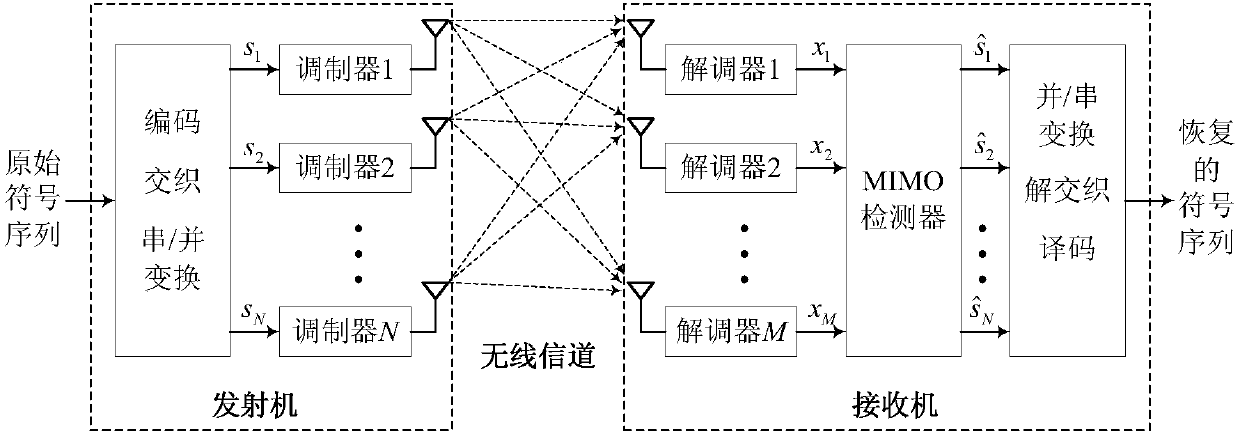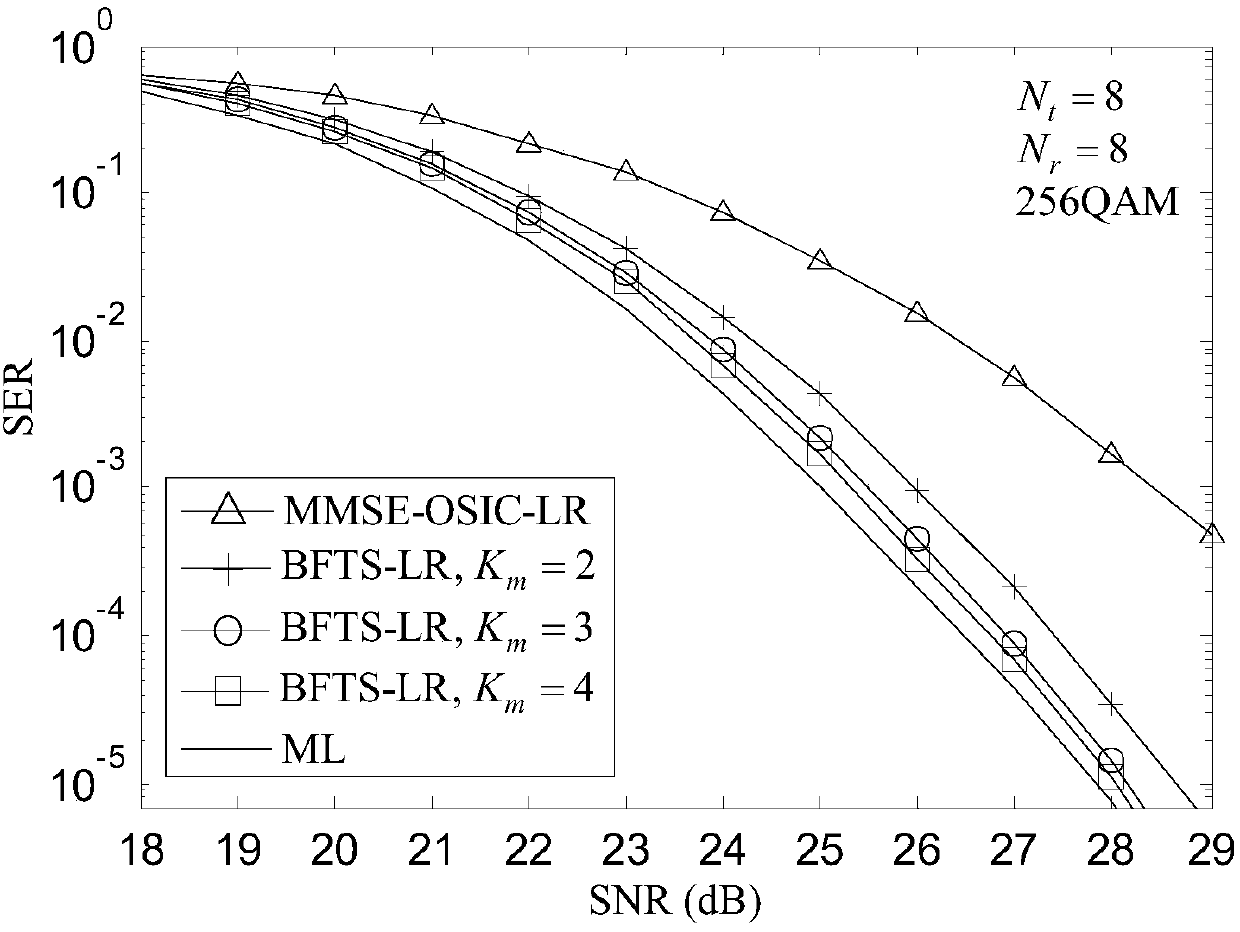Lattice reduction assisted breadth-first tree searching MIMO detecting method
A breadth-first, detection method technology, applied in space transmit diversity, shaping network in transmitter/receiver, transmission system, etc.
- Summary
- Abstract
- Description
- Claims
- Application Information
AI Technical Summary
Problems solved by technology
Method used
Image
Examples
Embodiment 1
[0156] enter: parameter: k=1,...,2N t ,N c (=2),K m .
[0157] output: (Send symbol vector test results).
[0158] 1: The received signal is expressed as: Change the received signal and channel matrix into MMSE form, for the sake of convenience, the original symbol is still used: that is
[0159] pair channel matrix Carry out grid reduction to obtain the reduced basis Unimodular matrix Using the LLL algorithm, δ=0.99.
[0160] 2: The complex number model is transformed into a real number model, expressed as x=As+w, where represents the set of real numbers), Specific conversion method:
[0161] s = Re ( s · ) Im ( s ...
Embodiment 2
[0210] enter: parameter: ε, k=1,...,2N t ,N c (=2), K m .
[0211] output: (Send symbol vector test results).
[0212] 1: The received signal is expressed as: Change the received signal and channel matrix into MMSE form, for the sake of convenience, the original symbol is still used: that is
[0213] Calculate channel matrix Pseudo-inverse of
[0214] Pseudo-inverse matrix Carry out grid reduction to obtain the reduced basis Unimodular matrix Using the D-LLL algorithm, δ=0.99.
[0215] calculate
[0216] 2: The complex number model is transformed into a real number model, expressed as x=As+w, where represents the set of real numbers), Specific conversion method:
[0217] s = Re ( s · ) Im ...
PUM
 Login to View More
Login to View More Abstract
Description
Claims
Application Information
 Login to View More
Login to View More - R&D
- Intellectual Property
- Life Sciences
- Materials
- Tech Scout
- Unparalleled Data Quality
- Higher Quality Content
- 60% Fewer Hallucinations
Browse by: Latest US Patents, China's latest patents, Technical Efficacy Thesaurus, Application Domain, Technology Topic, Popular Technical Reports.
© 2025 PatSnap. All rights reserved.Legal|Privacy policy|Modern Slavery Act Transparency Statement|Sitemap|About US| Contact US: help@patsnap.com



